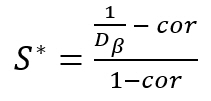Concepts, Methods and Tools to manage Business Performance
Dear Friends, dear Visitors,
I wish all of you a Happy and Prosperous New Year 2018!
From July 13th to 15th the International Symposium on the Analytic Hierarchy Process (ISAHP) for Decision Making takes place in Hong Kong. Poster submission is possible from Nov 1st, 2017 to Mar 15th, 2018 and individual paper submission from Nov 1st, 2017 to Mar 6th. Early registration deadline May 15th, 2018. More Information about the ISAHP 2018 can be found on their website.
After my last participation in 2013, I plan to attend the conference in July. If you want to meet me personally, feel free to contact me. I submitted an individual paper about the implementation of my AHP-OS software; it is a short version of my detailed working paper. In additon I will probably submit a short version of my paper Comparison of Judgment Scales of the Analytical Hierarchy Process – A New Approach. This paper was submitted to the International Journal of Information Technology and Decision Making in June 2017, and is under review since then. All attempts to contact the editors and to find out, why the review process takes so long, were unsuccessful.
My AHP-OS software has now reached nearly 6000 registrations since its implementation in 2014. It should be quite stable and without major bugs. Unfortunately, there is still a minor sporadic problem with the storage of pairwise comparisons. It appears in 1 out of 1000 projects that a set pairwise comparisons just disappears. I am still trying to find the reason, kindly contact me, when this happens to you, and let me know the circumstances (It seems to have something to do with the browser and stored session data).
Please continue to support my effort, either with a donation, or at least give a 1 (poor) to 5 (excellent) rating to my web posts, which will help me to get some feedback on my work.
For now, please enjoy your visit on the site and feel free to leave a comment – it is always appreciated.

Klaus D. Goepel,
Singapore, Jan 2018
BPMSG stands for Business Performance Management Singapore. As of now, it is a non-commercial website, and information is shared for educational purposes. Please see licensing conditions and terms of use.









 Equation (1.10) is used in the latest updated of the
Equation (1.10) is used in the latest updated of the 
